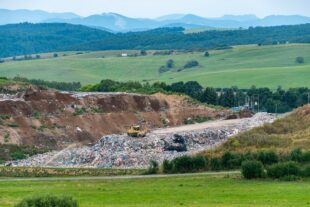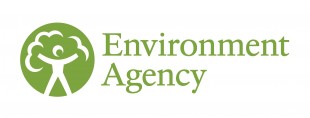
The Environment Agency has set out in one place what it is doing to help reduce methane emissions in England, bringing together all their work in a new Methane Action Plan (2024-26). Mark Ellis-Jones, the national Climate Change and Energy Manager, helps explain more.
Why is methane important?
Methane (CH4) is the main component of natural gas, with 60% of global emissions coming from human activity (e.g. fossil fuels, waste) and 40% coming from nature (Global Methane Budget).
This is important because methane is a potent greenhouse gas, and a major contributor to global climate change. Whilst short-lived in our atmosphere, it is 28 times stronger than carbon dioxide (CO2), with some estimates putting it much higher. Methane can also contribute to deteriorating air quality and impacts on human health. According to the United Nation’s Intergovernmental Panel on Climate Change (IPCC), nearly half of the 1.1°C global temperature increase is attributable to methane.
Cutting methane emissions is therefore one of the most effective ways to reduce near-term global warming. Unfortunately, global concentrations of methane continue to increase (Global Methane Tracker 2023). Fortunately, global governments – including the UK – are committed to doing something about it.
UK action on methane
The UK has long acknowledged the importance of reducing methane emissions as part of its broader climate change targets, and in meeting net zero by 2050. The UK Methane Memorandum details how UK methane emissions dropped by over 62% since 1990 and what more is being done to secure further progress.
In 2022, the UK signed the Global Methane Pledge to collectively reduce global methane emissions by at least 30% by 2030 compared to 2020 levels. And in 2023, the UNFCCC’s COP28 agreement called on all countries to accelerate efforts to reduce methane emissions by 2030.
In the UK, methane represented 14% of total greenhouse gas (GHG) emissions in 2022, with the main sources coming from agriculture, waste and fuel supply sectors (DESNZ 2024 ).
The Environment Agency’s role
The Environment Agency has an important regulatory role in reducing methane emissions in England. Our Methane Action Plan sets out how we will reduce methane emissions using our powers as an environmental regulator whilst also sharing knowledge and good practice to reduce methane emissions in the UK and internationally.
Methane is recognised as a priority pollutant requiring capture and control for certain sectors we regulate, such as landfill sites, and anaerobic digestors operating under Environmental Permitting Regulations (EPR). We also work with other sectors, including water companies and farmers, to reduce their methane emissions through their compliance with regulatory requirements that also help control methane or by supporting them to develop voluntary actions, such as industry codes of practice, or by sharing information and research on reducing emissions.
Our Methane Action Plan sets out three priority objectives:
- Improving the data of sectors we regulate to support better decisions and targeted action by improving how methane is measured, monitored, reported and modelled.
- Maximising the effectiveness of our regulation to enable and encourage operators to reduce methane emissions and maximise utilisation efficiency:
-
- Reduce and where possible prevent emissions from sectors we regulate for methane losses, such as landfill sites, and anaerobic digestors operating under Environmental Permitting Regulations.
- Continue to provide technical assistance to policy makers in government to help shape future regulations to deliver further reductions in methane emissions.
- Working with external partners to share knowledge to improve our collective understanding of how to reduce methane, measuring standards and monitoring approaches.
Our work in practice
Here are two case studies of how we’ve been working to put the Methane Action Plan into practice.
Diffuse emissions from waste water treatment
Our Regulated Industry officers identified potential diffuse biogas emissions from a post anaerobic digestion (AD) storage tank at a waste water treatment works. The officers used an optical gas imaging (OGI) camera to identify the diffuse emissions of biogas as part of their investigation and identified that there was approximately 300 m3/day of biogas emitted to atmosphere. There is a significant proportion of the biogas that is comprised of methane. As a result of this work, the water company took steps to deal with this diffuse emission. The water company proposed to enclose the post AD storage tank to capture the gas as a fuel for the onsite combined heat and power (CHP) plant used to power site operations. This is a good example of how the Environment Agency has used the OGI cameras to help reduce greenhouse gas emissions and a potential odour source.
Fugitive emissions from an onshore oil well
The Environment Agency regularly reviews permits and as part of an improvement programme for the onshore oil and gas industry our regulatory teams conducted a review of waste gas management at several sites. A review of an oil well site in the south of England identified an unacceptable level of associated gas venting at the site. Using our guidance, we required the operator to assess whether the vented gas could be utilised, rather than wasted. As the site is remote and some distance from potential electrical and gas grid connections, the operator determined that a gas compression and bottling scheme would be feasible. The scheme would allow the export of gas in cylinders for use as a fuel at other sites. The gas utilisation system is now installed and operational, saving approximately 12,250 tonnes CO2e a year.

5 comments
Comment by Derek Stewart Smith posted on
I refer to your statement that methane is 25 times more damaging to global warming and climate change than carbon dioxide
I believe it is actually 80 times more damaging overall.
I also note that the Environment Agency states that it is doing everything possible to limit methane being discharged freely by venting into the atmosphere
At Singleton West Sussex two Environmental Permits have been issued by the Environment Agency allowing unlimited amounts of methane and radio active gas to be vented without any restrictions
Similarly the Permit for Wytch Farm ( the largest onshore oil well site in the UK) has been issued an Environmental Permit with “No limits specified” for methane discharges into the atmosphere.
How can the Environment Agency state that everything is being done to limit methane discharges?
Investigations with an Infrared sensitive FLIR camera has revealed methane being illegally discharged from loosened inspection cover plates on the tops of all four oil separator tanks at Singleton for over four years .
A recent survey has revealed that gas is still leaking.
Bearing mind that the normal working pressures in these tanks is approximately 700 psi the quantity of methane which is being illegally and dangerously discharged is enormous everyday.
Several Reports have been made to both the Environment Agency and HSE but the gas is still be allowed to leak.
The same investigating Team also discovered other sites in the South of England where gas was being allowed to illegally leak from inspection covers on sites operated by the same company as Singleton.
Derek Stewart Smith C.Eng., M.I.C.E., M.I.Struct. E.
derek.stewartsmith2@btopenworld.com
Comment by Vincent L posted on
Methane has been a bit forgotten in the fight against climate change until recently (I'd say until the last COP).
This is very important that national agencies recognize the issue and start tackling it, through measure and data collection first, to regulation & operational initiatives then.
A lot has been going on in the field. Infrared camera, as the previous commenter writes, are useful for high-concentrations leaks such as seen in the oil&gas industry. Satellite measure (Sentinel or MethaneSat) are also great but works only on large scale leaks. Then, small, cheap but unreliable semi-conductors sensors are also being developed to create network of IoT sensors. I tried to gather all those ideas there https://www.methanefix.tech/, happy to have some feedback!
Comment by Philip Maber posted on
Thank you Vincent. Are you aware of the [European] Clean Air Task Force who video record the appalling methane fugitive and permitted vented emissions to our precious atmosphere? As shown at COP 26 Glasgow. Unknown are the other volatile organic compounds (VOCs) and other nasties also being continuously emitted - at Star Energy (was IGas) Singleton, West Sussex this is ongoing for some 30+ years and EA Permitted to at least the end of 2031.
Comment by Peter Somerville posted on
The largest source of methane emissions in the UK is from livestock farming, specifically the result of enteric fermentation by ruminants, but the Environment Agency has little to say about this. No doubt productivity improvements can make a difference but there have been no such improvements since 2009. Also the introduction of feed products with methane suppressing properties is unlikely to make much difference, at least in the short to medium term. Other policies, especially to do with changing the nation's diet, are now urgently required if we are to get anywhere near the target of 30% reduction in methane emissions from 2020 to 2030.
Comment by Ginny Barrett posted on
"If we were to hit net zero tomorrow, I don't believe we are in a safe place at all." says @Sir_David_King, former Chief Scientific Advisor. Find out what else he says about methane and other greenhouse gases. https://x.com/rogerhallamcs21/status/1829065927641506076?s=46%EF%BF%BC&fbclid=IwY2xjawE-QENleHRuA2FlbQIxMAABHbAdqlgCFIMS9YWyvq9GdNnj1cnvFfvFW6z3ptK36Lrrgdl50LRyQ7Jo6g_aem_EicipzOH2yTGrOLsmbrpBQ